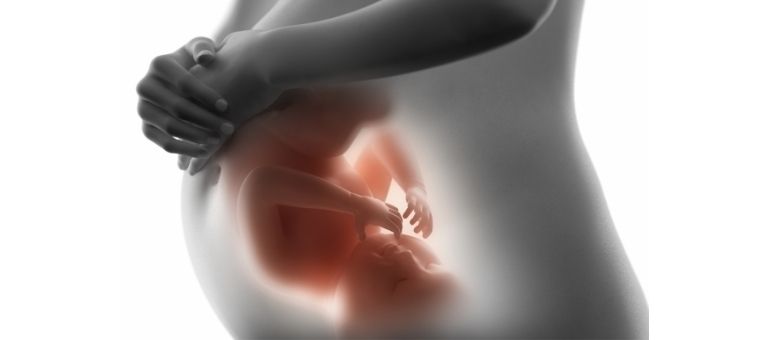WHAT IS AN EPIDURAL BIRTH?
An epidural is a procedure performed before delivery where an anesthetic is administered through a catheter that is inserted into the spine with a special needle in the lower back. The goal of this procedure is to numb the lower body and block the sensation of pain. It is also known as painless childbirth and epidural analgesia. Painless childbirth is a method used for natural birth. However, in cases where a natural birth started with this method cannot be completed for any reason, a Cesarean section can also be performed by increasing the dose and concentration of the medication given through the epidural catheter.
WHAT HAPPENS DURING AN EPIDURAL BIRTH?
Labor is the process of a baby moving through the birth canal and exiting the body with strong contractions when the time comes. The labor process happens in three stages: dilation, the baby’s delivery, and the delivery of the placenta. In the dilation stage, pain is caused by uterine contractions, the widening of the cervix, and the opening of the birth canal. This pain is felt as rhythmic contractions and is quite intense. In the second stage, pain is caused by the baby’s head moving down the birth canal and stretching the soft tissues in the pelvis and pelvic floor as it exits.
ARE THERE OTHER METHODS TO REDUCE PAIN DURING AN EPIDURAL BIRTH?
Although labor is a natural process, the pain felt during it is very intense, and various methods are used to reduce it. While methods like hypnosis, acupuncture, aromatherapy, various exercises, breathing exercises, numbing certain pain-causing nerves with local anesthetics, and TENS application are used for this purpose, these methods are not sufficient to reduce labor pain. The most effective method for reducing labor pain is the epidural method.
CAN THE EPIDURAL BIRTH TECHNIQUE BE USED IN ALL NATURAL BIRTHS?
The basic condition for an epidural birth is that the mother consciously chooses to participate in the birth process. Additionally, an epidural birth may be an option if the pregnancy has been problem-free, there are regular uterine contractions, the cervix is dilated 3-7 cm, it is a single baby, and the pregnancy is 38-42 weeks. Even if you meet all these conditions, it is best to evaluate your situation with your specialist doctor.
HOW IS EPIDURAL ANESTHESIA APPLIED?
The epidural method is one of the most widely used regional anesthesia techniques, and anesthesiologists are very experienced with it. Before the procedure, the anesthesiologist assesses the mother’s condition. If no issues are found, they explain how the procedure will be performed and its possible side effects and answer any questions the mother may have. After the person is positioned correctly, the area where the needle will be inserted is sterilized with antiseptic fluids and covered in a sterile manner. The skin and subcutaneous tissues at the level where the procedure will be performed are numbed with thin needles. Then, a special epidural needle is used to enter the epidural space, where a thin tube called a catheter is placed and secured to the body with medical tape. A short time after the medication is administered through the catheter, the mother begins to feel no pain from the contractions. The epidural method does not stop uterine contractions, it only blocks the pain. When the epidural catheter is inserted by an experienced anesthesiologist, the success rate of the procedure is extremely high, and the side effects are very low. Statistics show that with epidural birth, the desired effect is achieved in 85% of pregnant women, a partial effect is seen in 12%, and no effect is seen in 3% of pregnant women.
HOW IS AN EPIDURAL BIRTH PERFORMED?
The epidural method is applied once the uterine contractions become regular, the cervix has thinned by about 60-70%, and the dilation reaches 4 cm—that is, when the pain starts to seriously bother the mother. Applying the epidural anesthesia before this stage can affect contractions and delay the birth. If it is done too late, the mother will have already experienced unnecessary pain, and since the contractions will be more frequent, the mother-to-be may not be able to remain still during the procedure, which can make the epidural application difficult. After the medication is applied, the feet will start to feel warm and tingly, and then a numbness will be felt that rises to the navel. The application of the epidural anesthesia takes about 10 minutes on average, and the pain begins to decrease shortly after the application. It can take up to 15 minutes for the full effect of the epidural to be felt. When the pain intensifies as labor progresses and the effect of the medication wears off, the specialist doctor will re-adjust the dosage. Patients who have the epidural method may not feel the urge to push during birth because they do not feel the contractions. However, the healthcare professionals assisting with the birth can monitor the contractions on a monitor by connecting the patient to an NST device and can tell the mother the right time to push.
WHAT ARE THE ADVANTAGES OF AN EPIDURAL BIRTH?
The main advantage of the epidural method is that a natural birth can be experienced without pain. The pain relief from this method positively affects the health of both the baby and the mother and greatly increases the comfort of the birth. Since the mother is not tired or in pain during the birth process, she can push easily and actively participate in the birth. Since the mother is awake and pain-free when she gives birth to her baby, she can enjoy that beautiful moment. After birth, the mother can quickly recover and is able to care for and breastfeed her baby. Because a large amount of medication is not used in this method, there is very little negative effect on the mother and baby. However, it can, albeit rarely, cause the labor process to be prolonged. The advantages of epidural anesthesia can be listed as follows:
- Epidural anesthesia provides extremely effective pain control during natural birth and can be used throughout the entire labor process.
- In long labors, it helps the mother rest and store the energy needed to push effectively at the time of delivery.
- It makes it possible for the mother to have a positive birth experience by eliminating the negative aspects of labor.
- Thanks to epidural anesthesia, the mother can take an active role throughout the entire birth process and witness every moment of the birth.
- Unlike systemic anesthetic drugs, only a very small dose of medication is transferred to the baby. Epidural birth is an extremely safe method for both the mother and the baby.
- The epidural anesthesia application allows for an easy transition from a natural birth to a Cesarean section in case of an emergency.
- The mother’s easier post-birth recovery and her ability to immediately care for her baby are also made possible by epidural birth.
ARE THERE DISADVANTAGES AND UNDESIRABLE SIDE EFFECTS OF AN EPIDURAL BIRTH?
In addition to its many advantages, the epidural method also has some disadvantages. When the epidural catheter is inserted by an experienced anesthesiologist, the side effects will be greatly reduced. Despite this, some undesirable side effects may occur. Among these side effects, mild dizziness, a temporary drop in blood pressure, nausea, itching, grogginess, and inability to urinate are more common, but they can be easily treated. Furthermore:
- Headaches and back pain are less than a 1% possibility.
- Temporary weakness in the legs due to the medication.
- Slowing of the baby’s heart rate.
- Damage to the nerves and a risk of infection are extremely rare.
WHO CANNOT HAVE AN EPIDURAL?
Some medical conditions can prevent an epidural birth.
- Patients who use blood thinners or medications that prevent clotting.
- Patients who are being treated for clotting disorders.
- Patients with excessive bleeding.
- In cases where there is an infection in the application area.
- If there is a history of a previous back operation.
In patients with high blood pressure, epidural anesthesia can be applied if the gynecologist and the anesthesiologist deem it appropriate. For an epidural birth, the mother must be willing to have it, and the specialist doctors must deem the mother a suitable candidate for epidural anesthesia.






